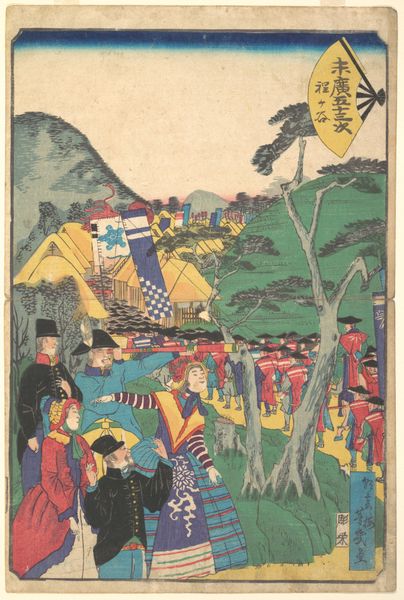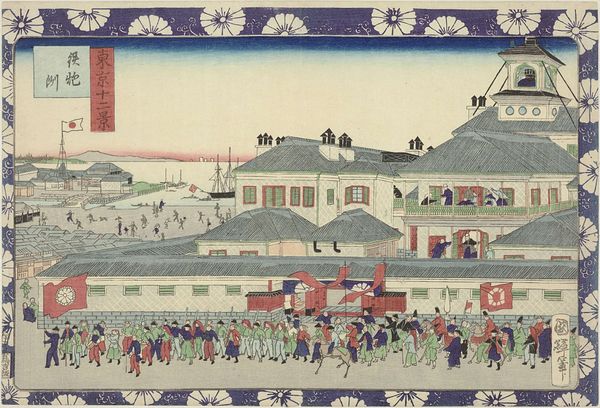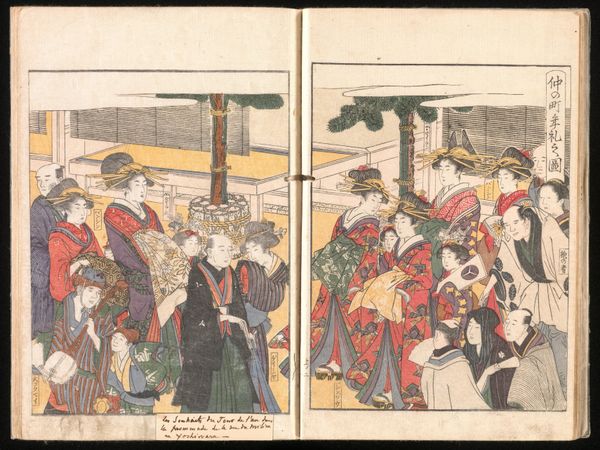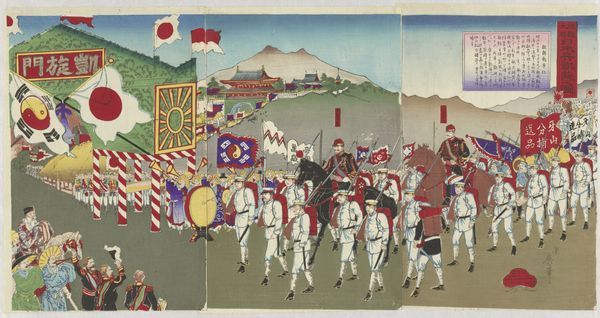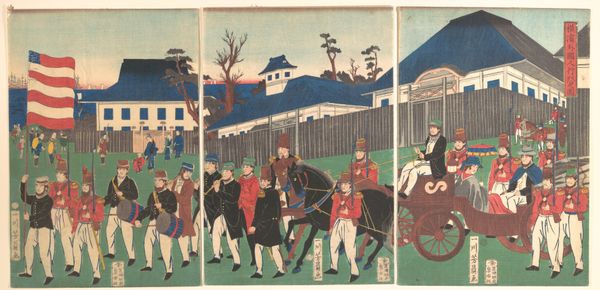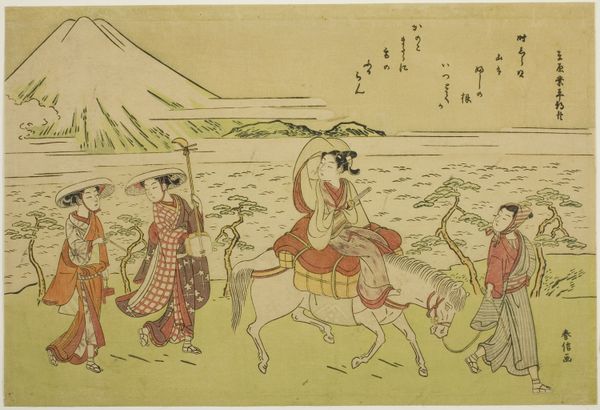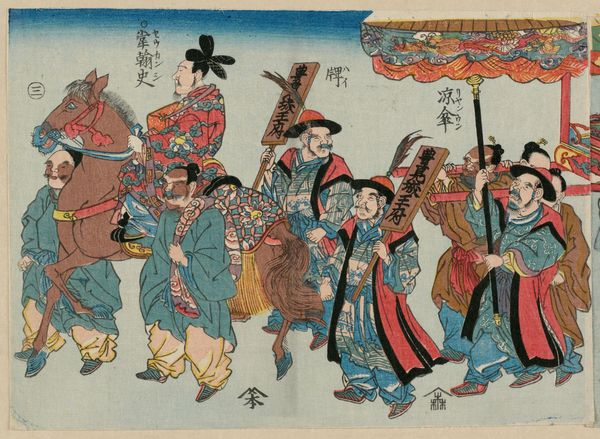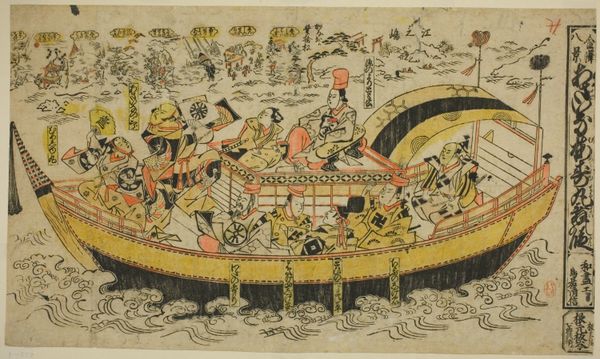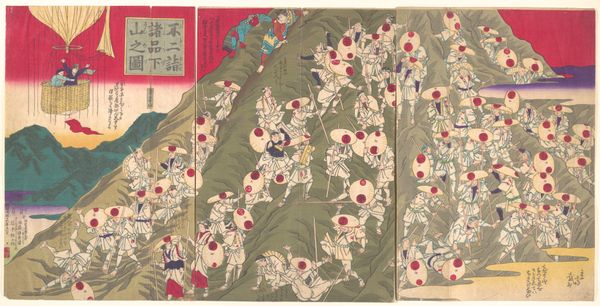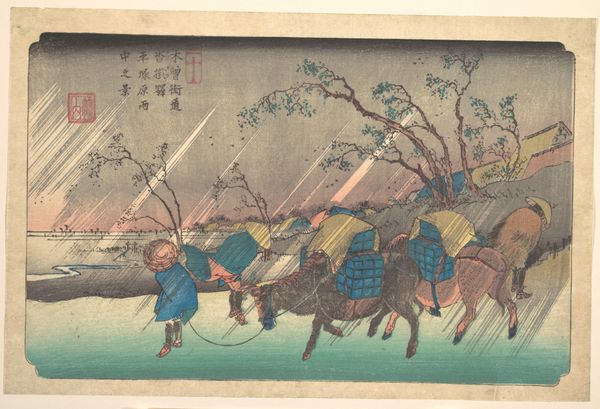
Illustration of the Imperial Carriage (Gohōren no zu) 1889
0:00
0:00
Dimensions: Triptych 14 9/16 x 29 in. (37 x 73.6 cm)
Copyright: Public Domain
Utagawa Kunitoshi created this triptych woodblock print, "Illustration of the Imperial Carriage," sometime in the late nineteenth century. The work is an intriguing array of horizontal and vertical lines, contrasted by the circular forms of the wheels and floral emblems on the carriage. The artist uses a vibrant colour palette of reds, blues and browns. Here, the structure and composition of the print invite us to consider the representation of power and modernity in Meiji-era Japan. The formal procession, with its rigid lines and ordered ranks, signifies a display of imperial authority, yet the Western-style carriage and attire, juxtaposed against traditional Japanese architecture, present a symbolic tension between the old and the new. This contrast can be understood through the lens of semiotics, where the carriage functions as a signifier of modernity, while the surrounding traditional elements, like the stone walls and Mount Fuji, represent the established order. In closing, the print’s formal qualities – the structured composition, the tension between linear and circular forms, and the contrasting colour palette – visually represent the complex negotiations of identity and power that defined Japan's Meiji period. This is not just an aesthetic representation but a cultural discourse on Japan's place in a rapidly changing world.
Comments
No comments
Be the first to comment and join the conversation on the ultimate creative platform.
